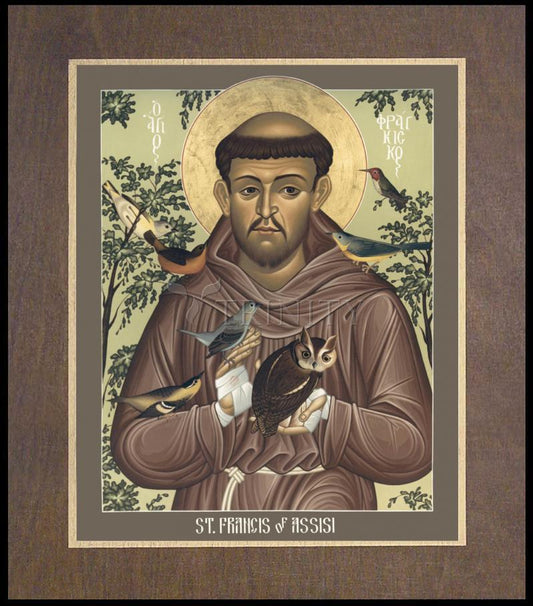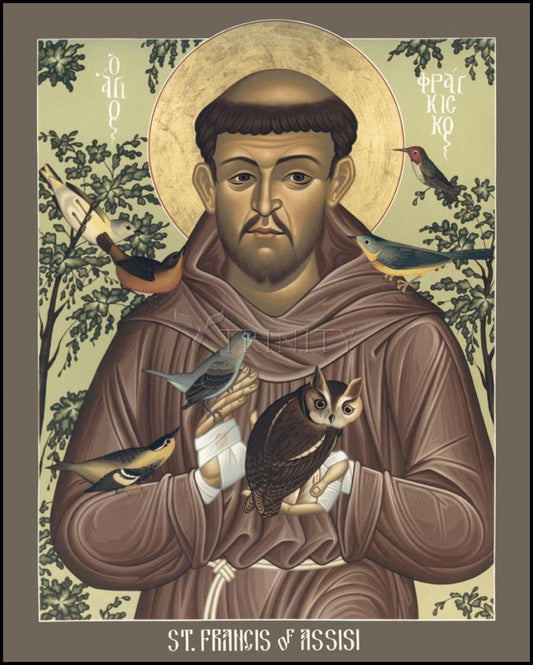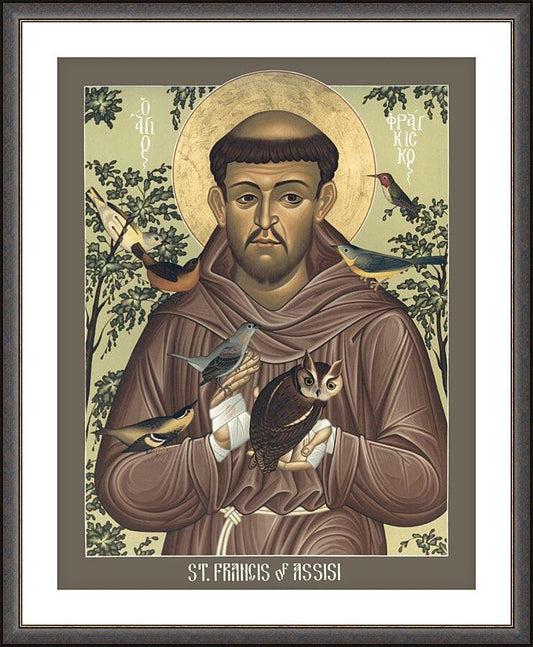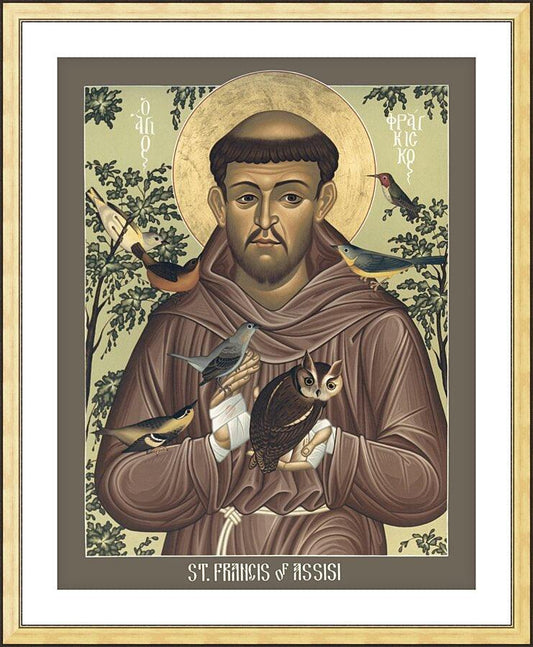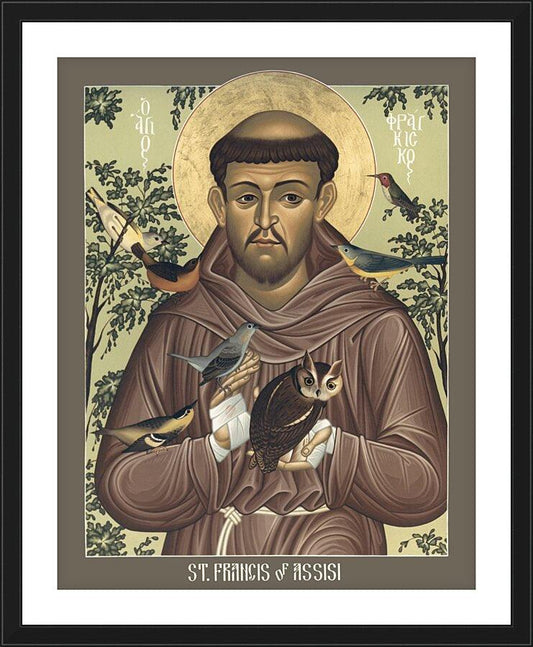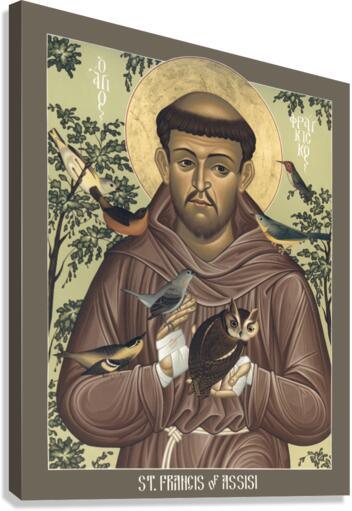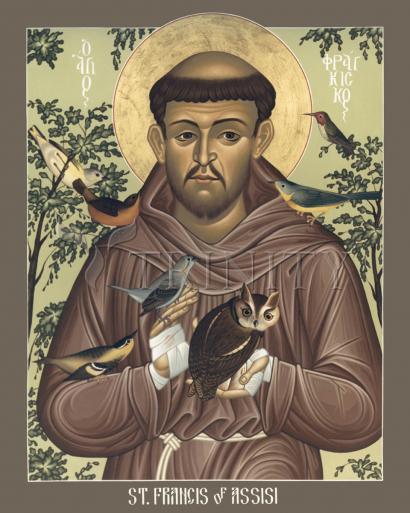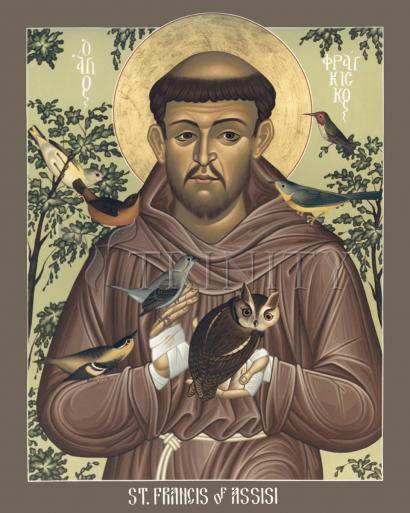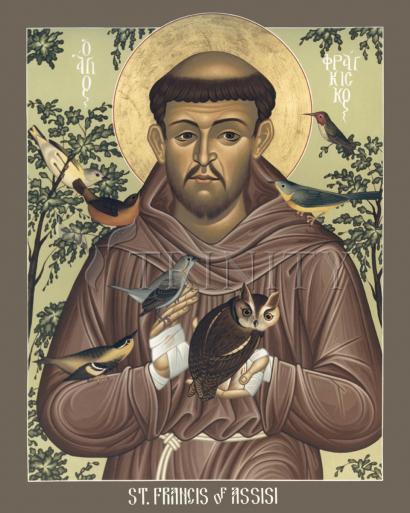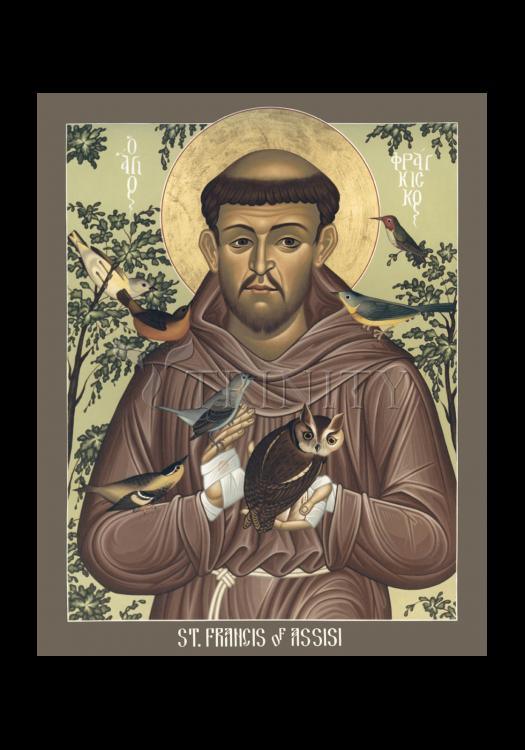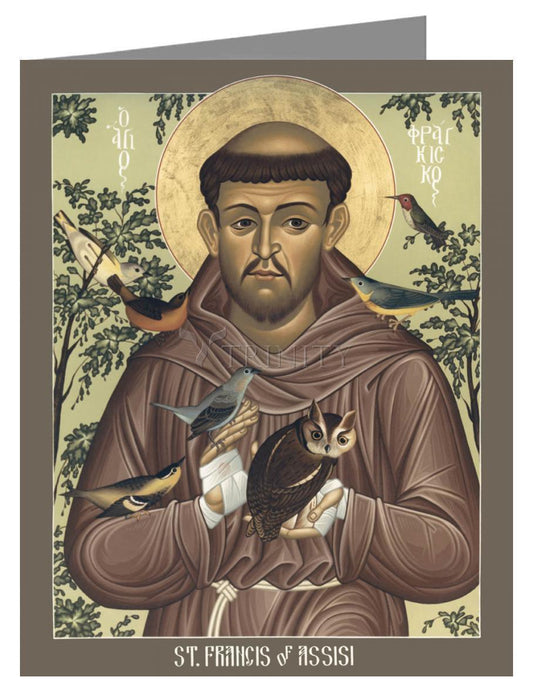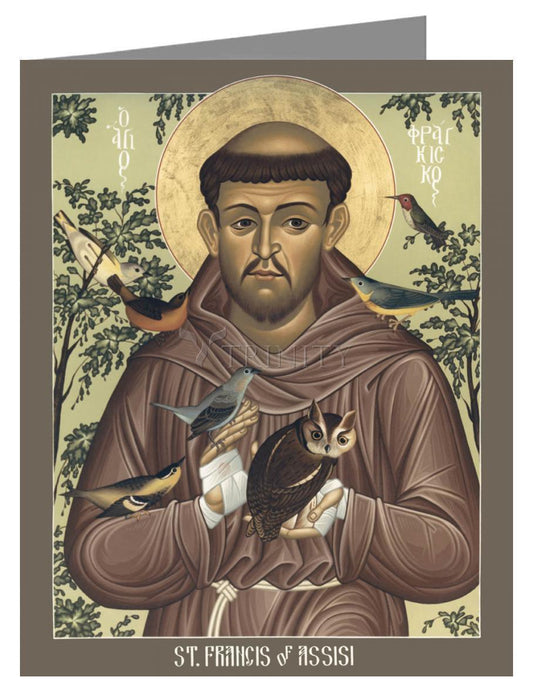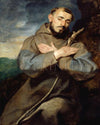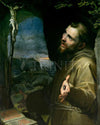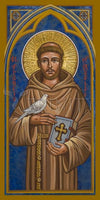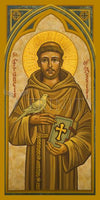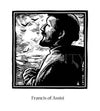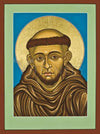The Franciscan rule
Francis preached to townspeople"even though as a layperson he was without license to do so"and he soon attracted followers. In 1209 he composed for his mendicant disciples, or friars, a simple rule (Regula primitiva, "Primitive Rule") drawn from passages in the Bible: "To follow the teachings of our Lord Jesus Christ and to walk in his footsteps." He then led the group of 12 disciples to Rome to seek the approval of Pope Innocent III, an important step that demonstrated Francis's recognition of papal authority and saved his order from the fate of the Waldensians, who had been declared heretics in the late 12th century. At first Innocent was hesitant, but, following a dream in which he saw Francis holding up the church of San Giovanni in Laterano, he gave oral approbation to the Franciscan rule of life. This event, which according to tradition, occurred on April 16, 1210, marked the official founding of the Franciscan order. The Friars Minor, or Lesser Brothers, as they came to be known, were street preachers with no possessions and only the Porziuncola as a centre. They preached and worked first in Umbria and then, as their numbers grew rapidly, in the rest of Italy.
Probably no one in history has set out as seriously as did Francis to imitate the life of Christ and to carry out so literally Christ's work in Christ's own way. This is the key to the character and spirit of St. Francis and helps explain his veneration for the Eucharist (the body and blood of Christ) and respect for the priests who handled the elements of the communion sacrament. To neglect this point is to present an unbalanced portrait of the saint as a lover of nature, a social worker, an itinerant preacher, and a celebrant of poverty.
Certainly the love of poverty is part of his spirit, and his contemporaries celebrated poverty either as his "lady," in the allegorical Sacrum commercium (Eng. trans., Francis and His Lady Poverty, 1964), or as his "bride," in the fresco by Giotto in the lower church of San Francesco at Assisi. Indeed, poverty was so important to Francis that in his last writing, the Testament, composed shortly before his death in 1226, he declared unambiguously that absolute personal and corporate poverty was the essential lifestyle for the members of his order. It was not, however, mere external poverty he sought but the total denial of self (as in the Letter of Paul to the Philippians 2:7).
Francis considered all nature as the mirror of God and as so many steps to God. He called all creatures his "brothers" and "sisters," and, in the most endearing stories about him, preached to the birds and persuaded a wolf to stop attacking the people of the town of Gubbio and their livestock if the townspeople agreed to feed the wolf. In his "Canticle of the Creatures" (less properly called by such names as the "Praises of Creatures" or the "Canticle of the Sun"), he referred to "Brother Sun" and "Sister Moon," the wind and water, and even "Sister Death." He nicknamed his long and painful illnesses his "sisters," and he begged pardon of "Brother Ass the body" for having unduly burdened him with his penances. Above all, his deep sense of brotherhood under God embraced his fellow men, for "he considered himself no friend of Christ if he did not cherish those for whom Christ died."
In 1212 Francis organized a second order, one for women, that became known as the Poor Clares. He gave a religious habit, or dress, similar to his own to the noblewoman later known as St. Clare (Clara) of Assisi and then lodged her and a few companions in the church of San Damiano, where they were joined by women of Assisi. For those who could not leave their families and homes, he eventually (c. 1221) formed the Third Order of Brothers and Sisters of Penance, a lay fraternity that, without withdrawing from the world or taking religious vows, would carry out the principles of Franciscan life. As the friars became more numerous, the order extended outside Italy.
Determined to bring the Gospel to all God's creatures, Francis, on several occasions, sought to take his message out of Italy. In the late spring of 1212, he set out for the Holy Land to preach to the Muslims but was shipwrecked on the east coast of the Adriatic Sea and had to return. A year or two later, sickness forced him to abandon a journey to the Muslims in Spain. In 1217 he proposed to go to France, but the future Pope Gregory IX, Cardinal Ugolino of Segni, an early and important supporter of the order, advised Francis that he was needed more in Italy. In 1219 he did go to Egypt, where the crusaders were besieging Damietta. He went into the Muslim camp and preached to the sultan al-KÄmil, who was impressed by him and gave him permission (it is said) to visit the sacred places in the Holy Land.
News of disturbances among the friars in Italy forced Francis to return. Although the Order of the Friars Minor had grown at a faster rate than any previous religious order, it had not experienced similar organizational growth and had little more than Francis's example and his brief rule of life to guide its increasing numbers. To correct this situation, Francis prepared a new and more detailed rule (Regula prima, "First Rule," or Regula non bullata, "Rule Without a Bull"), which reasserted devotion to poverty and the apostolic life and introduced greater institutional structure but was never officially sanctioned by the pope. He also appointed Peter Catanii as his vicar to handle the order's practical affairs; after Peter's early death in 1221, Francis replaced him with Brother Elias of Cortona. Two years later, Francis submitted a further revision of the rule"known as the Regula secunda ("Second Rule"), or Regula bullata ("Rule with a Bull")"to Pope Honorius III, who approved it in the bull Solet annuere ("Accustomed to Grant") on November 29, 1223. As the official rule of the order, Regula bullata enjoined the friars "to observe the holy gospel of our Lord Jesus Christ, living in obedience without anything of our own and in chastity." It also outlined regulations for discipline, preaching, and entry into the order. After his rule received papal sanction, Francis withdrew increasingly from external affairs.
Francis's vision and the stigmata of the Crucified
At Christmastime in 1223, Francis participated in an important ceremony when he celebrated the birth of Jesus by recreating the manger of Bethlehem at a church in Greccio, Italy. This celebration demonstrated his devotion to the human Jesus, a devotion that would be rewarded in most dramatic fashion in the following year. In the summer of 1224, Francis went to the mountain retreat of La Verna (Alvernia), not far from Assisi, to celebrate the feast of the Assumption of the Blessed Virgin Mary (August 15) and to prepare for St. Michael's Day (September 29) by fasting for 40 days. He prayed that he might know how best to please God; opening the Gospels for the answer, he came upon references to the Passion of Christ three times. As he prayed during the morning of the feast of the Exaltation of the Cross (September 14), he beheld a figure coming toward him from the heavens. St. Bonaventure, minister-general of the Franciscans from 1257 to 1274 and a leading thinker of the 13th century, wrote:
As it stood above him, he saw that it was a man and yet a Seraph with six wings; his arms were extended and his feet conjoined, and his body was fixed to a cross. Two wings were raised above his head, two were extended as in flight, and two covered the whole body. The face was beautiful beyond all earthly beauty, and it smiled gently upon Francis. Conflicting emotions filled his heart, for though the vision brought great joy, the sight of the suffering and crucified figure stirred him to deepest sorrow. Pondering what this vision might mean, he finally understood that by God's providence he would be made like to the crucified Christ not by a bodily martyrdom but by conformity in mind and heart. Then as the vision disappeared, it left not only a greater ardour of love in the inner man but no less marvelously marked him outwardly with the stigmata of the Crucified.
For the remainder of his life, Francis took the greatest care to hide the stigmata (marks resembling the wounds on the crucified body of Jesus Christ). After the death of Francis, Brother Elias announced the stigmata to the order by a circular letter. Later, Brother Leo, the confessor and intimate companion of the saint who also left a written testimony of the event, said that in death Francis seemed like one just taken down from the cross.
Francis lived two years longer, in constant pain and almost totally blind (he had contracted an eye disease while proselytizing in the East in 1219). Medical treatment at Rieti was unsuccessful, and after a stay at Siena, he was brought back to Assisi, where he died at the Porziuncola. He was buried temporarily in the church of San Giorgio at Assisi. On July 15, 1228, concluding a process of unprecedented speed, Francis was canonized by his former protector, Pope Gregory IX. On the following day, the pope laid the foundation stone for the basilica that Brother Elias would build in Francis's memory, and in 1230 the saint's body was transferred to the lower church of the basilica.
Born: 1181 at Assisi, Umbria, Italy as Francis Bernardone
Died: October 4, 1226 at Portiuncula, Italy
Canonized: 1228 by Pope Gregory IX



